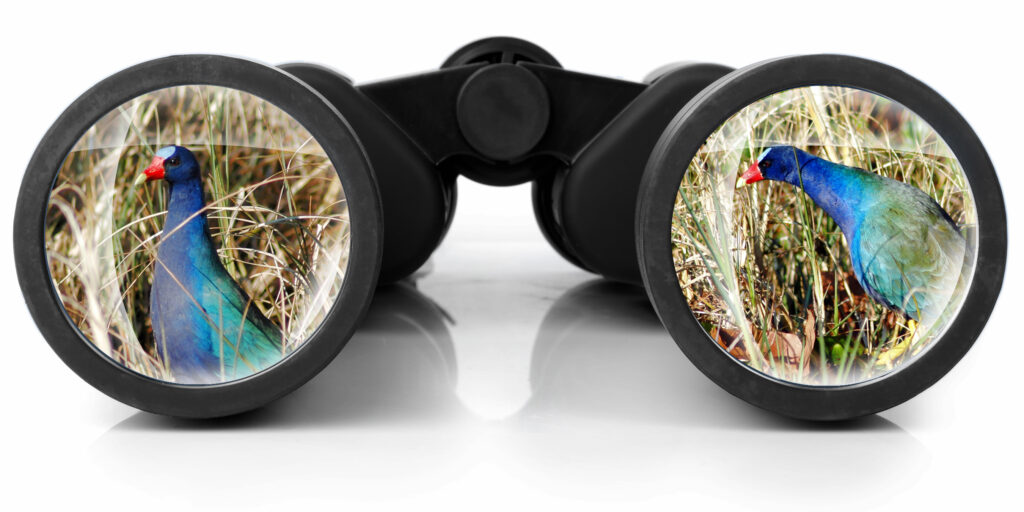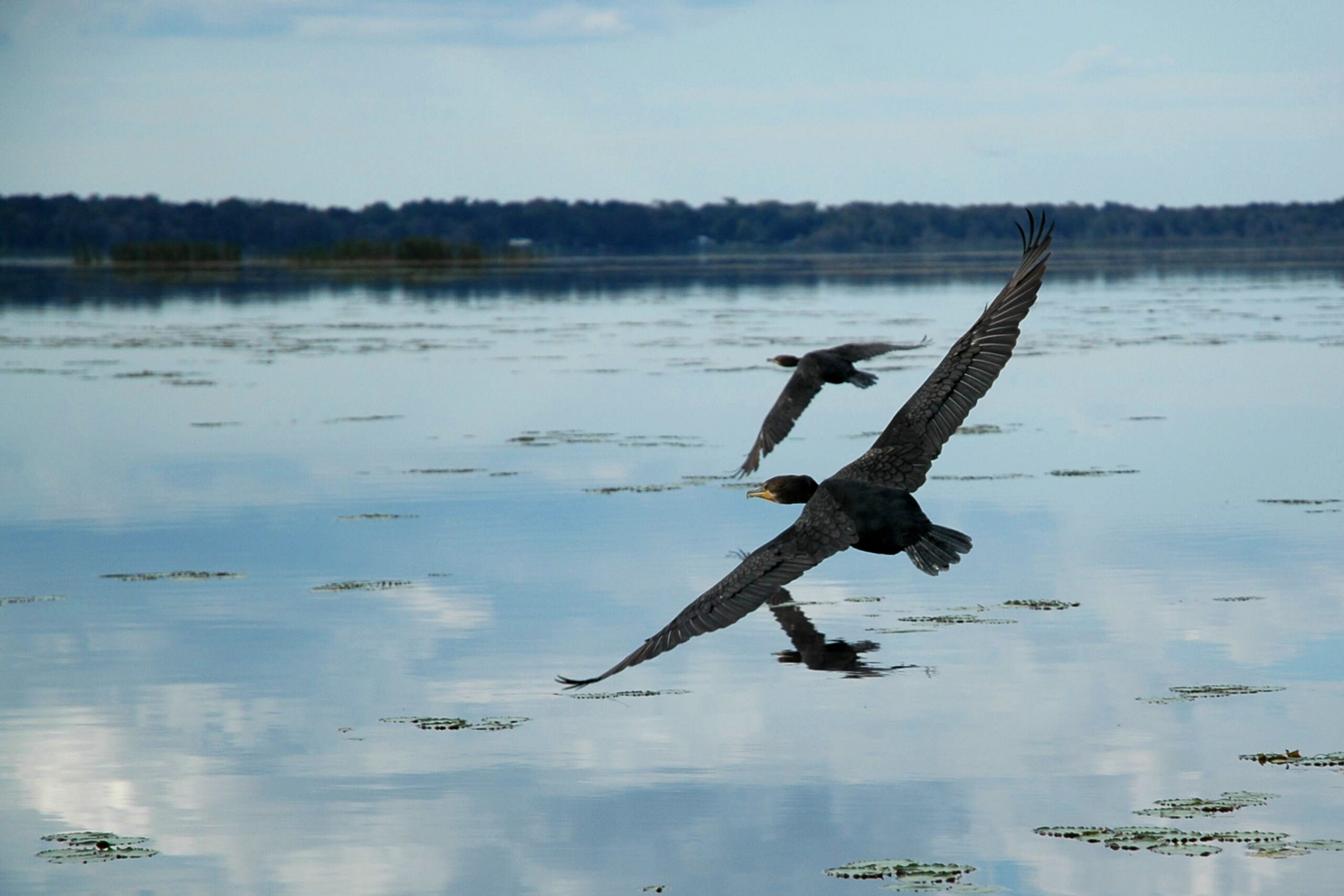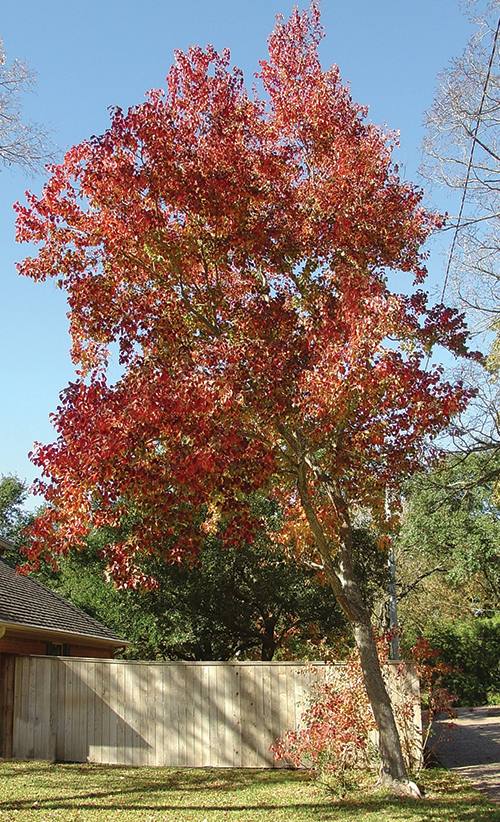Everyone is a bird watcher but might not realize it. Who hasn’t watched a beautiful bird, such as a striking cardinal, land in a nearby tree?

“I’ve gone to some interesting places and have seen many interesting birds, but people don’t have to do that,” says Joe Watts, an Alabama Audubon board member. “Everybody sees birds every day. I live in Birmingham. We’ve had 90 species of birds in our backyard, so it’s not absolutely necessary to go into the wilderness to see birds. In downtown Birmingham, I’ve even seen an American avocet, which is a shorebird.”
Some people get more into their avian hobby. They could spend thousands of dollars buying equipment and traveling all over the world to see birds they can’t see at home. Some birders buy journals to keep track of all the species they ever spotted.
“Serious birders make life lists of all the species they have ever seen,” Watts says. “Some people travel all over to add species to their life lists. Some people try to see as many birds as possible in one year.”
However, people could just stand in their own backyards, visit a city park or other places to watch birds without spending a fortune. In Alabama, these people might spot blue jays, mockingbirds, cardinals, finches, wrens, sparrows, woodpeckers, hummingbirds and many other common feathered creatures.
To identify birds, buy field guides or download apps such as Merlin Bird ID. With the Merlin app, people can upload a photo or listen to bird songs and the app will identify the species.
“Field guides are great for identifying birds,” Watts says. “National Geographic has a nice field guide, Birds of North America. Many people use apps on their smart phones now. The National Audubon Society has a free app that shows all the birds in North America. Cornell University has a terrific website, allaboutbirds.org. The Merlin app brings people to birds in a way that nothing else has before.”
To get a better look at their feathered friends, birders might want to get some binoculars. High quality optics can cost thousands of dollars, but anyone can buy a good set for less than $200.
More than 400 bird species call Alabama home. The Cotton State offers many public places to see feathered creatures. State parks, national wildlife refuges, wildlife management areas, beaches and other places provide excellent opportunities to see multiple species.
Watts works with the Alabama Birding Trails program (alabamabirdingtrails.com). This describes many places in the state to see birds of all kinds. Some better places include Wheeler National Wildlife Refuge, Guntersville State Park and Dauphin Island.
“People can drive to Wheeler NWR and walk a crushed gravel path to get into an air conditioned and heated two-story viewing building,” Watts says. “From that building, people can see thousands of sandhill cranes and ducks every winter. It has one-way glass. People can see out, but birds can’t see in.”
Many birds live in Alabama all year long, but others come and go with their annual migrations. In the fall, birds from northern states and Canada head south. Some winter in Alabama. Others continue onward to the Caribbean, Central America or South America. In the spring, birds fly back to their northern summer grounds.
In the fall, migrating birds stop in Alabama to rest and feed before crossing the Gulf. In the spring, they stop again, hungry, thirsty and exhausted. They stay a few days to rest and recuperate before proceeding on their northward journey.
Besides many common birds people see every day, birders across Alabama might spot some rare or interesting species, such as swallow-tailed kites, wood storks, sandhill cranes, loggerhead shrikes, painted buntings and many other species. What someone sees depends largely upon when and where they go.
Common west of Alabama, a few scissor-tailed flycatchers breed here every summer. Bald eagles made a significant population comeback in recent years. Once endangered, red-cockaded woodpeckers also made an incredible comeback, but still need help in their habitat. They only live in longleaf pine savannas.
Alabama Audubon holds an annual Black Belt Birding Festival in Greensboro every August. For more information, see alaudubon.org. For more information about birds, see the National Audubon Society website: audubon.org
John N. Felsher is a professional freelance writer who lives in Semmes, Ala. He also hosts an outdoors tips show for WAVH FM Talk 106.5 radio station in Mobile, Ala. Contact him at [email protected]
or through Facebook.




